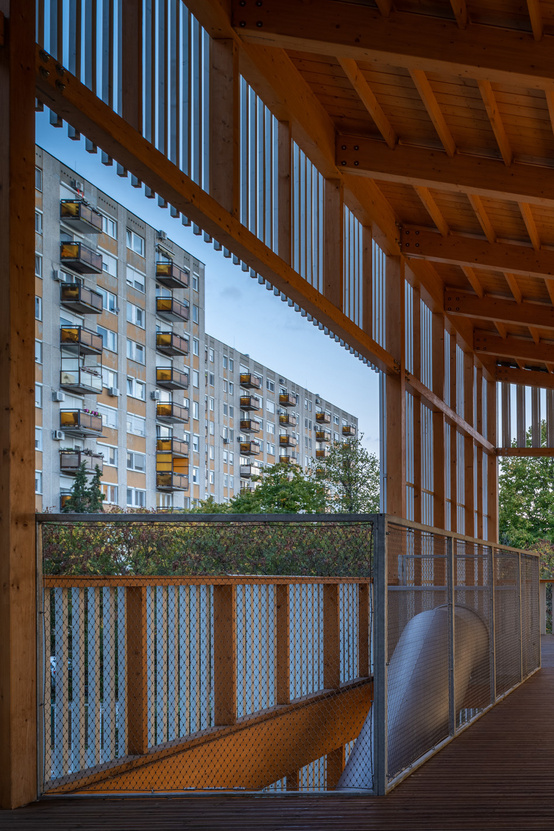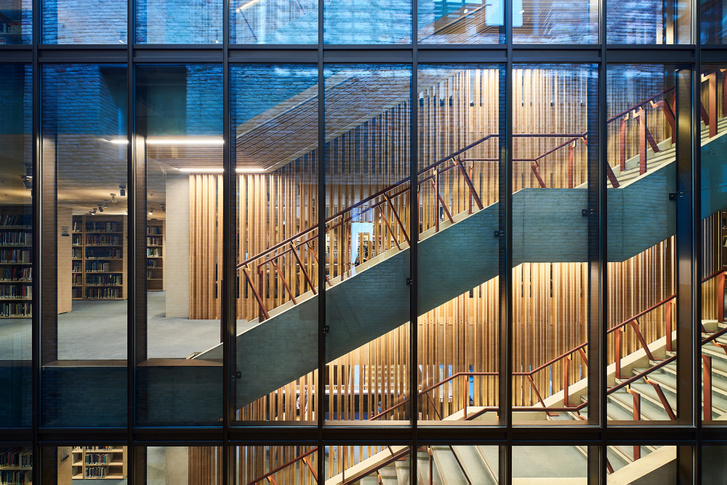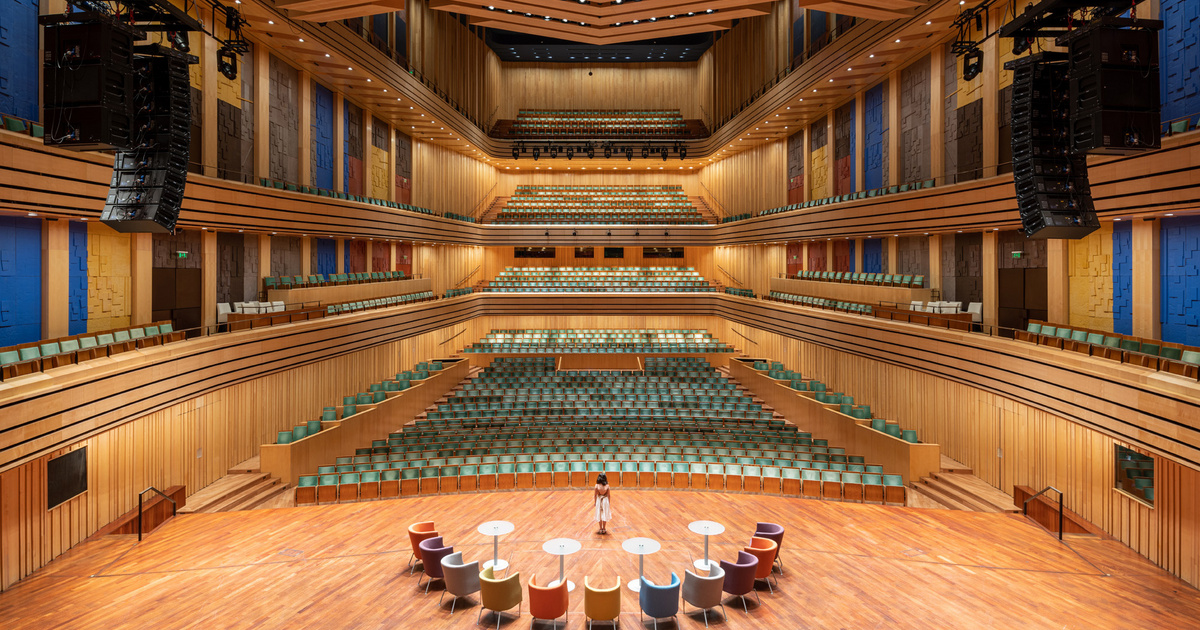There are probably few world cities with architecture, image and urbanism, and the everyday life associated with it would have gone as much in the last two decades as in Budapest. Of course, Paris, London, Prague, the big German and Czech cities are also in constant motion, but you obviously feel better where you wear the stone day by day, where you feel like you are almost a tourist in your own city, you don’t get tired. the eye, because there is always more and more investment, installation, renovation, splendor or just a frustrating horror, in a word, sights. Twenty years is just a narrow generation, yet it is the focus, the values, the technology, the message, the whole world.
7
MÜPA concert hall insideGallery: The Architecture of Budapest 2000-2022(Photo: György Palkó)
In our beloved capital
IN THE PAST TWENTY YEARS, CONSTRUCTION, AREA BUILDING, AND CHANGE IN IMPLEMENTATION HAVE ALMOST EXTENDED TO THE EXTENT OF THE XIX. AND XX. AT THE TURN OF THE CENTURY IN HAUSZMANN’S LOW TIME,
when the present face of the city was created with its magnificent tenement palace, when the New York Palace, Andrássy Avenue and its villas were built, when the foundations of today’s Budapest were laid. When the houses were built, they are rediscovered, renovated, played in the hands of Arab or Hungarian capital, and then inaugurated with glitter. The courtyard of Paris, the Klotild Palace, now the houses and villas of Drechsler (the former Ballet Institute) or Andrássy út.
The last twenty years have accelerated so much that when someone visits Budapest in 2000 and now again in 2022, they see a completely different city with trends at European level, such as green and brownfield investments, the incorporation of rust zones into urban space and on the other hand, there are plenty of monumental reconstructions, striking buildings following the word and individualism of the age, the bold Western European and world trends, and of course many harmful, revenue-maximizing ugliness, liquidation, and an untalented ore that would not have been born anymore. But a The architecture of Budapest 2000-2020 does not deal with this, it mostly takes into account the beauties, successes, defining values and buildings that have been created since the turn of the millennium, despite their subjectivity in a balanced and considered way, not only in terms of choice, but also in terms of professional value judgment and accompanying texts.
The idea of the album value, a beautiful and imposing volume, popped out of the head of the building photographer György Palkó, who also has international photography experience, on the model of Western European city books, and contains photos of 50 + 1 buildings. There are times when images are so strong, the light, the composition, the message to be conveyed, or the pursuit of perfection is so good that
THE PHOTOGRAPHY IS SO WONDERFUL THAT THE BUILDING IS AT LEAST YOUNG PEOPLE REMEMBER SO MOST POPULAR, NOT SO SOLIDLY IN EVERYDAY REALITY.
In some cases, this is also the case here, with some photos already looking like a computer-generated design with sharp, sharp contours. But it is not.
In the photos of György Palkó, even the environment becomes beautiful, the most glorious example of which is the Vizafogó member kindergarten, which allows you to see the panel of Kárpát utca built in the 70s from one angle, but this is not built around the modern building, reinterpreted, coated with the light of the present, thus representing some secret past. The model settlement of the Kádár era, where it was almost chic to live, is beautified, Kárpát utca, located in the corner of Újlipótváros, among the housing estates on the Pest side, meant something sociologically, if not otherwise. (Some kind of journalists, traders, and similar subsistence people lived here.)


7
Watershed nursery schoolGallery: The Architecture of Budapest 2000-2022(Photo: György Palkó)
Of course, the buildings in the volume are really significant, such as Gábor Zoboki and his team, MÜPA, one of the oldest buildings of almost twenty years, the National Dance Theater at the Millenáris, which is one of the youngest, and the urban-architectural reception or even he has not yet really acknowledged his own significance through everyday inclusion.
My personal favorite is the CEU, both as a building and as a photo that
It is also a rare gem in terms of CREATIVE CONTEMPORARY ARCHITECTURE, HEARING DESIGN AND CONCEPTUAL OPENNESS.
With its interior and exterior spaces, creative sloping lines, diverse use of materials, playfulness and generosity, an eye-catching copy of contemporary European architecture, it is a great pity that today, due to the exile of the institution, it does not serve what it originally served. Another liebling is also the very Western European, very trendy Mazel Tov restaurant in Elizabeth City, which simultaneously evokes the atmosphere, elegance and lush Mediterranean feeling of downtown ruin pubs.

7
CEUGallery: The Architecture of Budapest 2000-2022(Photo: György Palkó)
Of course, on the other side, there is also the horror of the Castle Garden Bazaar, but fortunately there is also a good example of a building that historizes, revives the past and is building between history and today, such as the expansion and reconstruction of the Piarist High School.
The authors of the volume, Anett Mizsei, an architect, architect, author, and collectors, curator Dániel D. Kovács, art historian, and editor Krisztina Somogyi, do not deny the subjectivity of the selection, despite the careful and multi-round selection method. Perhaps the most debatable point of the selection is that some family houses have been included in the volume, which is explained by the fact that it is also part of the city’s architecture, and that an educated layer, he chooses himself an architect. Despite this, the inclusion of some cube forks in the volume seems incomprehensible, but they are also part of the construction of Budapest, even if not really the urban fabric. What is sadly missing, in addition to the photos and description, is the exact address of the properties, the location, because with the exception of a few, it is definitely not where we look for them if they are located in a remote area or in a part of the city where we don’t visit every day.
The description of the buildings, the textual matter of the book, is intended for the general public, free from emotional outbursts, and the texts are objective and reflect professional judgment rather than individual opinion.
THE The architecture of Budapest 2000-2020 a beautiful volume that confirms in us that the city is changing so fast that if we make only three stops above the surface, we already have the feeling that we have switched from a tourist ticket to a raging metropolis, which of course is not just the epidemic but much more also battered. However, this volume is festive and uplifting, which is intended to show value and diversity beyond fifty years beyond the current state.
Anett-Palkó György Mizsei: The Architecture of Budapest 2000-2020

